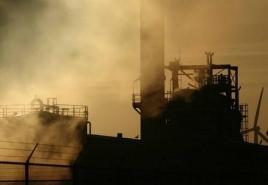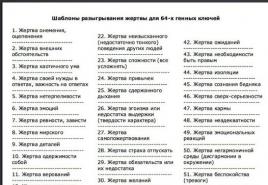When the planet earth was formed. The history of the development of the planet earth
\u003e Planet Earth
Everything about the planet Earth for children: how it appeared and was formed, interesting Facts, of which the structure in the photos and drawings, the rotation of the Earth, the Moon and life consists.
Start a story about Earth for the little ones possible from the fact that we live on the third planet from the Sun. Parents or teachers at school should be explain to childrenthat they were very lucky. After all, the Earth is so far the only known planet in the solar system that contains an atmosphere with oxygen, liquid oceans on the surface and life.
If we consider in size, then we are in fifth place (less, and, but more and)
The diameter of the planet Earth is 13,000 km. It is circular because gravity pulls in matter. Although not a perfect circle, the rotation causes the planet to collapse at the poles and expand at the equator.
Water occupies about 71% (most of it is the oceans). 1/5 of the atmosphere consists of oxygen, which is produced by plants. While scientists have studied the planet for centuries, spacecraft allowed to look at her from space. Below, schoolchildren and children of all ages will be able to consider interesting facts about the Earth and get a full description of the third planet from the Sun with photos and pictures. But it should be recalled that the Earth has a class, or rather a planetary type - a rocky body (there are also ice and gas giants that differ in characteristics).
Characteristics of the Earth's orbit - an explanation for the kids
To give full explanation for children, parents should reveal the concept of an axis. This is an imaginary line running through the center from the North Pole to the South Pole. One revolution takes 23.934 hours, and the circumsolar orbit takes 365.26 days (Earth year).

Children should know that the earth's axis is tilted relative to the plane of the ecliptic (the imaginary surface of the earth's orbit around the sun). Because of this, the northern and southern hemisphere sometimes turn and turn away from the sun. This leads to a change in the seasons (the amount of light and heat received changes).
The orbit of the Earth is not a perfect circle, but an oval ellipse (this is inherent in all planets). Approaches the Sun in early January and recedes in July (although this has less effect on heating and cooling than tilt earth axis). Should explain to children the value of finding a planet in the habitable zone. This is the distance that allows the temperature to keep the water liquid.
The Earth's Orbit and Rotation - An Explanation for Children
- Average distance from the Sun: 149,598,262 km.
- Perihelion (closest distance to the Sun): 147,098,291 km.
- Aphelios (the most distant distance from the Sun): 152,098,233 km.
- Duration of a sunny day (one axial revolution): 23.934 hours.
- Length of the year (one circumnavigation of the Sun): 365.26 days.
- Equatorial inclination to orbit: 23.4393 degrees.
Formation and Evolution of the Earth - Explained for Children
Explanation for children will remain incomplete if description of the earth will bypass the background. Researchers believe that the Earth formed along with the Sun and other planets 4.6 billion years ago. Then it was reunited with a huge gas and dusty cloud - the solar nebula. Gravity gradually shattered it, giving it more speed and disc shape. Most of the material pulled into the center and began to form.
Other particles collided and combined to form larger bodies. sunny wind possessed such strength that he was able to displace the lighter elements (hydrogen and helium) from the most distant worlds. That is why the Earth and other planets have become rocky.
In early history, the planet Earth for children can seem like a lifeless piece of rock. The radioactive materials and pressure growing from the depths provided enough heat to melt the interior. This caused some chemicals to splash out, forming water, while others became atmospheric gases. According to the latest data, the crust and oceans could have appeared 200 million years after the formation of the planet.
Children should know that earthly history is divided into 4 eons: Hadean, Archean, Proterozoic and Phanerozoic. The first three took almost 4 billion years and are collectively called Precambrian. Evidence for life was found in the Archean about 3.8 billion years ago. But life was not rich before the Phanerozoic.
The Phanerozoic period is divided into 3 eras: Paleozoic, Mesozoic and Cenozoic. The first demonstrated the emergence of many species of animals and plants in the seas and on land. The Mesozoic provided dinosaurs, but the Cenozoic is literally our era (mammals).

Most fossils from the Paleozoic are invertebrates (corals, trilobites, and molluscs). Fish fossils were 450 million years old, and those of amphibians were 380 million years old. Huge forests, swamps and early reptiles populated the Earth 300 million years ago.
The Mesozoic became the period of the life of the dinosaurs. Although the mammalian fossils were also 200 million years old. During this period, power was seized by flowering plants (and continue to hold it today).
The Cenozoic began about 65 million years ago, when the dinosaurs became extinct (scientists attribute this merit to cosmic impact). Mammals managed to survive, and they became the main creatures on the planet.
Composition and structure of the Earth - explanation for children
Atmosphere
Composition: 78% nitrogen and 21% oxygen with minor impurities of water, carbon dioxide, argon and other gases. Nowhere else in Solar system you will not find an atmosphere filled with free oxygen. But this is what turned out to be important for our life.
Air surrounds the earth, becoming thinner with distance from the surface. At an altitude of 160 km, it is so thin that satellites have to overcome only minor resistance. But traces of the atmosphere are still found at an altitude of 600 km.

The lowest layer of the atmosphere is the troposphere. She does not stop moving and is responsible for weather conditions. sunlight heats the atmosphere by creating a warm air stream. It expands and cools as the pressure decreases. Children must understand that the cold air becomes denser, therefore it sinks down to warm in the lower layers.
The stratosphere is located at an altitude of 48 km. It is a stationary ozone layer created by ultraviolet light that causes a trio of oxygen atoms to form an ozone molecule. For the little ones it will be interesting to know that it is ozone that protects us from most of the dangerous ultraviolet radiation.
Carbon dioxide, water vapor and other gases trap heat and heat the Earth. If it were not for this "greenhouse effect", the surface would be too cold and would not allow life to develop. The wrong greenhouse, though, could turn us into a hellishly hot Venus counterpart.
Satellites in low-earth orbit have shown that the upper atmosphere expands during the day and decreases at night due to heating and cooling processes.
A magnetic field

The Earth's magnetic field is created by streams emanating from the outer layer of the earth's core. Magnetic poles always moving. The magnetic north pole accelerates movement up to 40 km per year. In a few decades he will leave North America and will reach Siberia.
NASA believes the magnetic field is changing in other directions as well. Worldwide, it has weakened by 10%, if measured from the 19th century. Although these transformations are insignificant if you go deeper into the distant past. Sometimes the field was completely overturned, changing the north and south poles in places.
When particles charged by the Sun are in a magnetic field, they break against air molecules above the poles and create aurora - northern and southern.
Chemical composition
The most abundant element in the earth's crust is oxygen (47%). Next come silicon (27%), aluminum (8%), iron (5%), calcium (4%), and 2% each potassium, sodium and magnesium.
The core of the Earth consists mainly of nickel, iron and lighter elements (sulfur and oxygen). The mantle is made of silicate rocks rich in iron and magnesium (the combination of silicon and oxygen is silica, and the materials containing it are called silicate).
Internal structure
Schoolchildren and children of all ages should remember that the Earth's core is 7100 km wide (slightly more than half the Earth's diameter and roughly the size of Mars). The most distant layers (2250 km) are liquid, but the inner one is solid and reaches 4/5 the size of the Moon (2600 km in diameter).

Above the core is a mantle 2,900 km thick. Children could hear at schoolthat it is not entirely rigid, but it can flow very slowly. The earth's crust floats across it, causing an almost imperceptible displacement of continents. True, people realize this in the form of earthquakes, erupting volcanoes and the formation of mountain ranges.
There are two kinds crust... The landmass of the continents is composed mostly of granite and other light silicate minerals. The ocean floors are dark and dense volcanic rock - basalt. The continental crust is up to 40 km thick, although it may differ from region to region. Oceanic grows only up to 8 km. Water fills low basalt areas and forms the world's oceans. The Earth has a lot of water, so it completely fills the ocean basins. The rest reaches the edges of the continents - a continental plume.
The closer to the core, the warmer. At the very bottom of the continental crust, the temperature reaches 1000 ° C and increases by 1 ° C with every kilometer down. Geologists suggest that the outer core is heated to 3700-4300 ° C, and the inner - 7000 ° C. It's even hotter than on the surface of the Sun. Only enormous pressure makes it possible to maintain its structure.
Recent studies of exoplanets (like NASA's Kepler mission) suggest that Earth-like planets are found throughout our galaxy. Nearly a quarter of observed solar stars may have potential habitable lands.
Earth Moon - explanation for children
Children should not forget that the Earth has a faithful companion - the Moon. It is 3474 km wide (about a quarter of the Earth's diameter). Our planet has only one satellite, although Venus and Mercury do not have them at all, and some have two or more.
The moon formed after a giant object crashed into the Earth. The debris was torn off and became the composite material of the moon. Scientists believe the object was roughly the size of Mars.
So far, it is known that the Earth is the only planet in the universe inhabited by life. There are several million known species from the deepest ocean floor to the highest levels atmosphere. But researchers say not everything has been found yet (roughly 5-100 million, of which only about 2 million have been found).
Scientists suspect that there are other habitable planets. Among them are considered the moon of Saturn Titan or Europa Jupiter. While researchers still understand the processes of evolution, it seems that Mars has every chance of having organisms. Some people think that it was from the Martian meteorites that fell to Earth that our life was born.
It is important to remind children that our planet is considered the most studied, because the exploration of the Earth is conducted from primitive tribes to today. Many interesting sciences offer characteristics of the planet from all angles. Geography of the Earth reveals countries, geology studies the composition and movement of plates, and biology considers living organisms. To make it more interesting for your child to explore the Earth, use printed or Google maps, as well as our online telescopes. Do not forget that planet Earth is a unique system and so far the only world with life. Therefore, it must not only be comprehensively studied, but also protected.
Planet Earth is the only known place where life has been found so far, I say so far because perhaps in the future people will discover another planet or satellite with intelligent life living there, but so far the Earth is the only place where there is life. Life on our planet is very diverse, from microscopic organisms to huge animals, plants and others. And people always had a question - How and where did our planet come from? There are many hypotheses. The hypotheses of the origin of the Earth are radically different from each other, and some of them are very hard to believe.
This is a very difficult question. You cannot look into the past and see how it all began and how it all began to emerge. The first hypotheses of the origin of the planet Earth began to appear in the 17th century, when people had already accumulated a sufficient amount of knowledge about space, our planet and the solar system itself. Now we adhere to two possible hypotheses of the origin of the Earth: Scientific - the Earth was formed from dust and gases. Then the Earth was a dangerous place for life after long years of evolution, the surface of the planet Earth became suitable for our life: the Earth's atmosphere, suitable for breathing, a hard surface, and a lot of dryness. And Religious - God created the Earth in 7 days and settled here all the variety of animals and plants. But at that time, knowledge was not enough to weed out all other hypotheses, and then there were much more of them:
- Georges Louis Leclerc Buffon. (1707-1788)
He made an assumption that no one would believe now. He suggested that the Earth could have formed from a piece of the Sun, which was torn off by a comet that fell into our star.
But this theory has been refuted. Edmund Halley, an English astronomer, noticed that the same comet visits our solar system with an interval of several decades. Halley even managed to predict the next appearance of the comet. He also found that the comet each time slightly changes its orbit, which means it does not have a significant mass to tear off the "piece" from the Sun.
- Immanuel Kant. (1724-1804)
Our Earth and the entire solar system were formed from a cold and contracting dust cloud. Kant wrote an anonymous book where he described his hypotheses for the origin of the planet, but it did not attract the attention of scientists. Scientists by this time were considering a more popular hypothesis put forward by Pierre Laplace, a French mathematician.
- Pierre-Simon Laplace (1749-1827)
Laplace suggested that the solar system was formed from a constantly rotating cloud of gas, incandescent to an enormous temperature. This theory is very similar to the current scientific theory.
- James Jeans (1877-1946)
A certain cosmic body, namely a star, passed too close to our Sun. Solar gravity pulled some mass out of this star, forming an arm of incandescent matter, which eventually formed all of our 9 planets. Jeans talked about his hypothesis so convincingly that in a short time it conquered the minds of people and they believed that this was the only possible occurrence of the planet.
So, we considered the most famous hypotheses of occurrence, they were very unusual and diverse. In our time, they would not even listen to such people, because now we have much more knowledge about our solar system and about the Earth than man knew then. Therefore, the hypotheses of the origin of the Earth were based only on the imagination of scientists. Now we can observe and conduct various studies and experiments, but this did not give us the final answer about how and from what exactly our planet arose.
It is so nice to know that planet Earth turned out to be the most suitable for various forms of life. It has ideal temperature conditions, enough air, oxygen and safe light. It's hard to believe that this never happened. Or almost nothing, except for a molten cosmic mass of indefinite shape, floating in weightlessness. But first things first.
Explosion on a universal scale
Early theories of the origin of the universe
Scientists have put forward various hypotheses explaining the birth of the Earth. In the 18th century, the French argued that the cause was a cosmic catastrophe as a result of the collision of the Sun with a comet. The British assured that the asteroid flying by the star cut off its part, from which it later appeared whole line celestial bodies.
German minds have moved on. They believed that the prototype of the formation of the planets of the solar system was a cold dust cloud of incredible size. Later it was decided that the dust was hot. One thing is clear: the formation of the Earth is inextricably linked with the formation of all planets and stars that make up the solar system.

Astronomers and physicists today are unanimous in the opinion that the universe was formed after. Billions of years ago, a giant fireball exploded into pieces in outer space. This caused a gigantic outburst of matter, the particles of which possessed colossal energy. It was the power of the latter that prevented the elements from creating atoms, forcing them to repel each other. The high temperature (about a billion degrees) also contributed to this. But after a million years, space cooled down to about 4000º. From that moment, the attraction and formation of atoms of light gaseous substances (hydrogen and helium) began.
Has excited the minds of scientists for many millennia. There were and are many versions - from purely theological to modern, formed on the basis of data from deep space research.
But since no one happened to be present during the formation of our planet, it remains to rely only on indirect "evidence". Also, powerful telescopes are of great help in removing the veil from this mystery.
solar system
The history of the Earth is inextricably linked with the emergence and around which it revolves. Therefore, you will have to start from afar. According to scientists, after Big bang it took one or two billion years for galaxies to become roughly what they are today. The solar system, on the other hand, originated, presumably, eight billion years later.
Most scientists agree that it, like all similar space objects, arose from a cloud of dust and gas, since matter in the Universe is distributed unevenly: somewhere there was more, and in another place - less. In the first case, this leads to the formation of nebulae of dust and gas. At some stage, possibly through external influence, such a cloud compressed and began to rotate. The reason for what happened is likely to lie in a supernova explosion somewhere in the vicinity of our future cradle. However, if all are formed approximately the same, then this hypothesis looks dubious. Most likely, having reached a certain mass, the cloud began to attract more particles to itself and shrink, and acquired a rotational moment due to the uneven distribution of matter in space. Over time, this swirling lump became denser in the middle. So, under the influence of tremendous pressure and rising temperatures, our Sun arose.
Hypotheses of different years
As mentioned above, people have always wondered how planet Earth was formed. The first scientific evidence appeared only in the seventeenth century AD. At that time, many discoveries were made, including physical laws... According to one of these hypotheses, the Earth was formed as a result of the collision of a comet with the Sun as residual matter from the explosion. According to the other, our system arose from a cold cloud of cosmic dust.

The particles of the latter collided with each other and joined until the sun and planets were formed. But French scientists suggested that the indicated cloud was incandescent. As it cooled, it rotated and contracted, forming rings. The planets were formed from the latter. And the sun appeared in the center. Englishman James Jeans suggested that once another star flew past our star. She pulled out by her gravity the matter from the Sun, from which the planets were subsequently formed.
How the Earth was formed
According to modern scientists, the solar system originated from cold particles of dust and gas. The substance was compressed and disintegrated into several parts. The sun was formed from the largest piece. This piece was spinning and heating up. It became like a disk. The planets, including our Earth, were formed from dense particles at the periphery of this gas-dust cloud. Meanwhile, in the center of a nascent star under the influence high temperatures and tremendous pressure went

There is a hypothesis, which arose during the search for exoplanets (similar to the Earth), that the more heavy elements a star has, the less likely the origin of life near it is. This is due to the fact that their large content leads to the appearance of gas giants around the star - objects like Jupiter. And such giants inevitably move towards the star and push small planets out of their orbits.
Date of Birth

The Earth was formed about four and a half billion years ago. The pieces spinning around the hot disc grew heavier and heavier. It is assumed that initially their particles were attracted by electrical forces. And at some stage, when the mass of this "coma" reached a certain level, it began to attract everything in the neighborhood with the help of gravity.
As in the case of the Sun, the clot began to shrink and heat up. The substance has completely melted. Over time, a heavier center formed, consisting mainly of metals. When the Earth was formed, it began to slowly cool, and the crust formed from lighter substances.
Collision
And then the Moon appeared, but not the way the Earth was formed, again, according to the assumption of scientists and according to the minerals found on our satellite. The Earth, already cooled down, collided with a slightly smaller other planet. As a result, both objects completely melted and turned into one. And the substance thrown out by the explosion began to revolve around the Earth. From it the Moon turned out. It is said that the minerals found on the satellite differ from those of the earth in their structure: as if the substance was melted and solidified again. But the same thing happened with our planet. And why did this terrible collision not lead to the complete destruction of two objects with the formation of small fragments? There are many mysteries.
Path to life
Then the Earth began to cool down again. A metal core formed again, followed by a thin surface layer. And between them is a relatively mobile substance - the mantle. Thanks to strong volcanic activity, the atmosphere of the planet was formed.

Initially, of course, it was completely unfit for human breathing. And life would be impossible without the appearance of liquid water. It is assumed that the latter was brought to our planet by billions of meteorites from the outskirts of the solar system. Apparently, some time after the formation of the Earth, a powerful bombardment occurred, the cause of which could be the gravitational effect of Jupiter. The water was trapped inside the minerals, and the volcanoes turned it into steam, and it fell out to form the oceans. Then oxygen appeared. According to many scientists, this was due to the vital activity of ancient organisms that could appear in those harsh conditions. But that's a completely different story. And humanity every year is getting closer and closer to getting an answer to the question of how the planet Earth was formed.
In the first hundreds of years of its existence, the Earth has experienced numerous cataclysms that left deep scars on its surface. Over the billions of years that have passed since then, wind and water erosion, global climate changes have almost erased the traces of the primitive era. But they can still be found. Examples of planets that are forming around other stars these days, as well as complex computer models, help to understand the history of our planet.
The solar system formed from the same initial cloud of gas and dust as the sun itself. Such clouds, called nebulae, are often invisible if not illuminated by stars. They are mostly composed of the lightest element, hydrogen, but contain small amounts of helium and heavier elements that were formed in previous generations of stars and released after their death.
No one knows for sure what brought a certain nebula on the path that led to the emergence of the solar system. It could be a blast wave from a nearby supernova, the action of gravity of a passing star, or simply a passage through a cloud of denser material as the nebula swung around in orbit. Whatever the trigger, 4.5 million years ago, something sent the nebula toward collapse.
CONCENTRATED SUBSTANCE
As the center of the cloud became denser, it began to exert more influence on its surroundings, pulling it inward, until after a light-year the original cloud was denser and became several light-hours wide. The concentration of matter led to the fact that the solar nebula began to rotate faster.
As a result, the nebula flattened out and took the shape of a disk with a bulge in the center. The bulge, containing about 90% of the nebula's mass, became our star, the Sun, but continued to be surrounded by gas and dust - the raw materials for the formation of the planetary system.
In the immediate vicinity of the Sun, the cloud was dominated by dust from heavy elements that form complex chemical compounds... Dust particles stuck together on collision, lighter ones tended to evaporate in conditions of harsh solar radiation. They were then blown away from the inner solar system and condensed again in cooler zones, where they helped to form.
As the clumps of dust grew larger, the risk of collisions increased, and eventually several of them grew large enough to have effective gravity.
GROWING PLANETS
The resulting planetozimals began to rapidly collect material from their surroundings. The exponential growth continued until several dozen objects, varying in size between the Moon and Mars, began to dominate the inner solar system. Constant bombardment of the surfaces of objects heated them to their melting point.
At this stage, the planetsimals stopped growing. However, most of them ended up in elongated, intersecting orbits, which resulted in collisions and their size increase by merging with each other. Each of these interplanetary collisions released a tremendous amount of energy, helping to keep the planetsimals hot.
LAND OF THE AGE OF GADEY
Last but not least, there was a colossal collision with a world the size of Mars called Theia, which resulted in. On Earth, the most significant events were the eruptions of a significant part of the planetary mantle and the absorption of Theia's core by the core of the Blue Planet. After the echoes of the tremors subsided, the Earth finally regained its present form. The early epoch of Earth's history is often called the Hadean period (the ancient Greeks called hell “Hades”). The gases from the molten interior formed a dense atmosphere, but the impact that formed the moon ripped off most of the atmosphere.
According to traditional views, at that time, the Earth's surface was shaken by violent volcanic activity, due to which it was constantly renewed. Probably, by that time a thin surface crust had formed - these could be minerals with a high content of heavy elements with a high melting point, for example, iron and magnesium. However, this dense material must have sunk into the molten rock beneath.
The gas released from all this activity created a high pressure atmosphere, possibly high in carbon dioxide. In turn, this led to a suffocating greenhouse effect similar to that observed today on Venus. Despite the temperature above 200 ° C, the water vapor released during gas evolution condensed into a liquid, and oceans with hot water were formed. However, recent studies of samples of some of the oldest rocks on Earth have challenged the traditional view.
INTENSIVE ROTATION
Whatever the surface conditions, something else has made the young Earth unrecognizable to the modern visitor. Theia's influence caused our planet to rotate very rapidly with a five-hour cycle of day and night. The rapid rotation resulted in the Earth being 1,800 km wider at the equator than from pole to pole. However, since then, the ebb and flow of the moon has slowed its motion, so the current equatorial diameter is only 43 km larger than the polar one.









